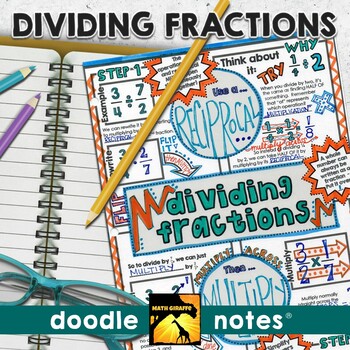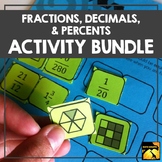DIVIDING FRACTIONS Doodle Notes | Guided Interactive Notes for Fraction Division
- PDF
What educators are saying
Also included in
- A variety of fun activities on Equivalent Fractions, Comparing Fractions, Decimals, & Percents, Converting Between Forms, Percent Equations, and Decimal & Fraction OperationsSave by getting all these resources in one set!(For an even bigger bundle that includes integers, critical thinking, gPrice $68.85Original Price $76.50Save $7.65
Description
Fraction Division: "doodle notes" - visual note taking pages with interactive tasks for building stronger retention of the concepts behind dividing fractions.
Boost your students' focus and memory! The blend of graphic and linguistic input in these guided visual notes helps students' brains to convert the information to long-term memory more easily.
When students color or doodle in math class, it activates both hemispheres of the brain at the same time. There are proven benefits of this cross-lateral brain activity:
- new learning
- relaxation (less math anxiety)
- visual connections
- better memory & retention of the content!
Students fill in the sheets, answer the questions, and color, doodle or embellish. Then, they can use it as a study guide later on.
Content includes:
- Rewriting as a multiplication problem with a reciprocal
- Why to use a reciprocal
- Reminders on how to multiply
- How to write answers (mixed numbers, simplest form)
- Visual models - dividing into groups
- Dividing combinations of mixed numbers, whole numbers, and fractions
- Practice & Examples
Check out the preview for more detail about this item and the research behind it.
** NOTE: This resource is also available as part of a DISCOUNTED bundle: Fractions, Decimals, & Percents Activity Bundle
Visual note taking strategies like sketch notes or doodle notes are based on dual coding theory. When we can blend the text input with graphic/visual input, the student brain processes the information differently and can more easily convert the new learning into long-term memory.
This strategy also integrates the left and right hemispheres of the brain to increase focus, learning, and retention!
If you’d like to get the benefits of the doodle note method for your students ALL throughout middle school, get the full set:






